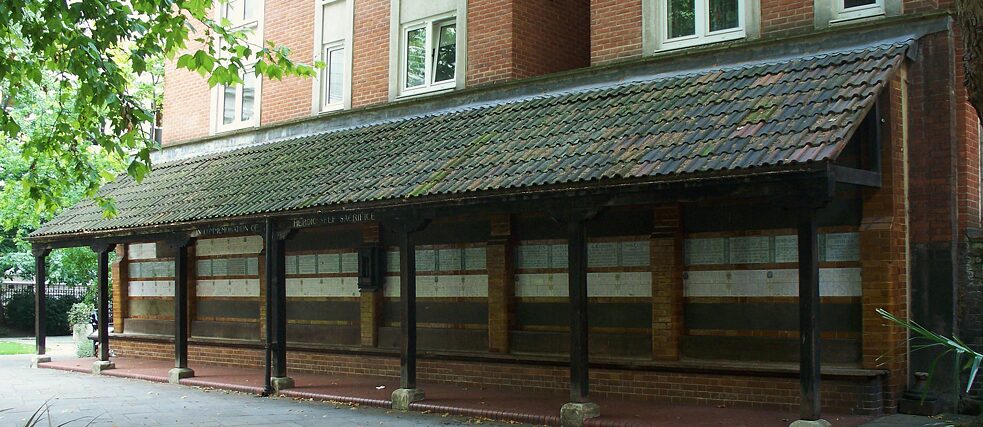Notes on memory works in three parts
Dreaming of Utopias in Architecture

Wall of Heroes, Postman’s Park, London | Photo by Iridiscent on Wikimedia Commons, licensed via CC BY-SA 3.0
By Ada Pinkston
Part I: Past
Stone, Bronze, Plaster, Marble, Cement, Steel.Monuments are often large and foreboding, overlooking the spectator with eyes of reverence. The spectator is overcome, completely surrounded, and encapsulated by the form that is the monument. That is, if people stop to look.
In the United States, most confederate statues were built decades after the Civil War ended. In fact, the height of their construction occurred at the beginning of the 20th century when Jim Crow laws and other racist praxes were being solidified throughout the United States.
According to the Southern Poverty Law Center, there are more than 1,700 symbols of the confederacy in public spaces. At this time, more than 100 Confederate symbols have been removed since the Charleston massacre in 2015, including 49 monuments, 4 flags, and name changes for 36 schools, 7 parks, 3 buildings and 9 roads.
Martin Luther King had a dream that is so often quoted. However, if we read through his theories on humanity and justice more carefully we would see that his dream still has not been achieved.
Part II: Present
The social architectures of white supremacy are reflected in the physical architectures of the monuments that still remain standing in the United States.I started LandMarked in 2016 after spending an extended period of time in Mississippi visiting a sick relative. The time that I spent in Mississippi reminded me of the irony of the land that I was born and raised on. From rural regions to redlined neighborhoods in cities, there was, and still is, no access to quality, affordable healthcare, food, and education. Yet, in 2016, in the midst of all this architecture of oppression, confederate monuments remained unscathed and in pristine condition.
LandMarked is an exploration of the architectural objects that we call monuments. It is a three-part project that consists of workshops, public performances, and a future vision to democratize public memorials by crowdsourcing objects of memory utilizing 3D printing technology. When I started this project, I did not dream that I would see the signifiers of oppression being removed at the rapid speed that they are now.
We are at a turning point. Confederate monuments are being removed, either by mass agitation in the streets or in the chambers of political councils. The state flag of Mississippi no longer has confederate iconography. School boards in many states have voted to change the names of at least 39 schools over the past six months. The leaders at the pentagon are evaluating whether to remove confederate symbols from military bases.
My dream was to tour the sites where confederate monuments once stood and host workshops and enact a series of public performances. However, considering the current polarization (and the fact that one of my virtual performance on Juneteenth was hacked by a white supremacist) I decided to hold off on this dream.
Part III: Future
There are numerous empty spaces where these relics to racism once stood. But what do we do with these empty spaces now? How do we create spaces for new memories? Do we need to create space for a new architecture that does not center the narrative and voice of people in power?How do we use technology to democratize public space without recreating the aesthetics of fascism? What are the aesthetics of truth? At this time, there are no utopias. I am not sure there ever will be. However, I am hopeful that as an artist who is a part of this new movement of memory work, we will somehow move closer to this dream.